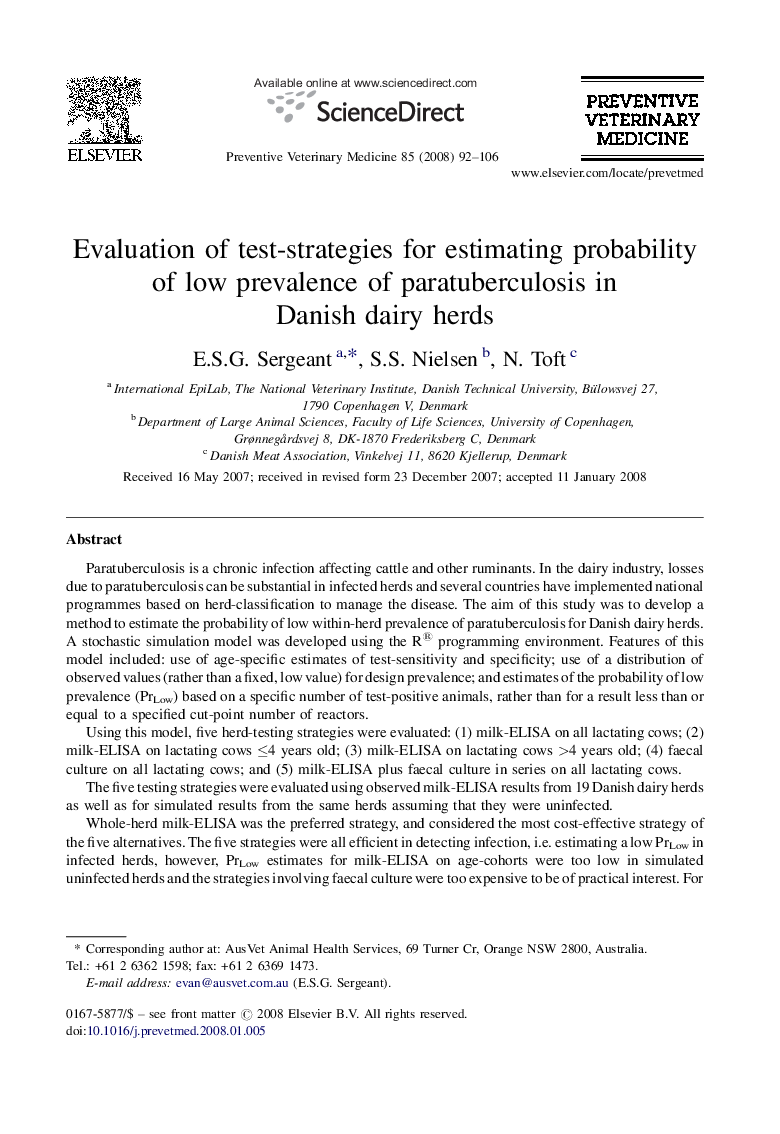| Article ID | Journal | Published Year | Pages | File Type |
|---|---|---|---|---|
| 2453326 | Preventive Veterinary Medicine | 2008 | 15 Pages |
Paratuberculosis is a chronic infection affecting cattle and other ruminants. In the dairy industry, losses due to paratuberculosis can be substantial in infected herds and several countries have implemented national programmes based on herd-classification to manage the disease. The aim of this study was to develop a method to estimate the probability of low within-herd prevalence of paratuberculosis for Danish dairy herds. A stochastic simulation model was developed using the R® programming environment. Features of this model included: use of age-specific estimates of test-sensitivity and specificity; use of a distribution of observed values (rather than a fixed, low value) for design prevalence; and estimates of the probability of low prevalence (PrLow) based on a specific number of test-positive animals, rather than for a result less than or equal to a specified cut-point number of reactors.Using this model, five herd-testing strategies were evaluated: (1) milk-ELISA on all lactating cows; (2) milk-ELISA on lactating cows ≤4 years old; (3) milk-ELISA on lactating cows >4 years old; (4) faecal culture on all lactating cows; and (5) milk-ELISA plus faecal culture in series on all lactating cows.The five testing strategies were evaluated using observed milk-ELISA results from 19 Danish dairy herds as well as for simulated results from the same herds assuming that they were uninfected.Whole-herd milk-ELISA was the preferred strategy, and considered the most cost-effective strategy of the five alternatives. The five strategies were all efficient in detecting infection, i.e. estimating a low PrLow in infected herds, however, PrLow estimates for milk-ELISA on age-cohorts were too low in simulated uninfected herds and the strategies involving faecal culture were too expensive to be of practical interest. For simulated uninfected herds, whole-herd milk-ELISA resulted in median PrLow values >0.9 for most herds, depending on herd size and age-structure. None of the strategies provided enough power to establish a high PrLow in smaller herds, or herds with a younger age-structure. Despite this, it appears as if the method is a useful approach for herd-classification for most herds in the Danish dairy industry.
